Magnavox Odyssey²
Top 10 Best Magnavox Odyssey² Games of All Time!
As the world’s first video game console, the Magnavox Odyssey launched an entire industry in 1972. Its games were primitive, but one of them served as the direct inspiration for Atari’s Pong. Atari went on to become the biggest arcade company in the world and redefined the home console market with the release of the Atari 2600 in 1977. With the Odyssey² (released in Europe as the Philips Videopac G7000), Magnavox hoped to turn the tables on their rival. The Odyssey² was comparable to Atari’s console from a technology standpoint, and Magnavox threw their full weight behind the system. Although the Odyssey² never caught on like the Atari 2600 did, its library was filled with unique games. Atari relied heavily on arcade ports and licensed titles to move systems, but most of the biggest games on the Odyssey² couldn’t be found anywhere else.
10
Quest for the Rings
1981
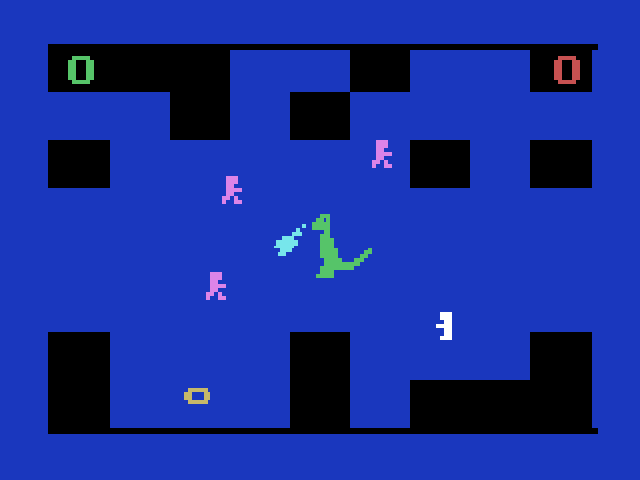
At the risk of sounding like a sensationalist, Quest for the Rings is one of the most ambitious and creative games of its era. It wouldn’t be fair to describe it as a video game, however, since its basically a hybrid of a video game and a standard board game. Quest for the Rings comes packaged with a colorful game board, an elaborate map, engraved tokens, and a detailed manual complete with character bios, a bestiary, and full-page art for each level. As players advance on the real-world game board, they occasionally switch over to the television to hunt for the eponymous rings in monster-filled dungeons. A lot of effort went into the game, but the end product doesn’t live up to its potential. Quest for the Rings doesn’t have the same flexibility as traditional paper-and-pen RPGs like Dungeons & Dragons, and the video game portion skirts the line between boring and frustrating. The hybrid concept never quite caught on like Magnavox intended, but Quest for the Rings deserves a lot of credit for doing something different.
9
UFO!
1981

UFO! is different from most of the other Odyssey² games on this list in the sense that it’s not easy to jump into. In order to destroy the various asteroids and enemy spacecraft that fill the screen, players first have to wrap their heads around the game’s unique control scheme. In most games, players simply shoot in the direction they are facing. In UFO!, the trajectory of your shots is determined by a glowing dot that rotates around your ship as you move. It can take a while to get used to the unconventional play mechanics, but it’s nice to be able to move in one direction while shooting in another. It feels great to destroy enemies while you are moving away from them, and it’s a lot of fun to create chain reactions by destroying asteroids at just the right moment. UFO! might look like a blatant Asteroids clone, but it’s innovative controls make it stand out. Once you get passed the learning curve, everything is second nature.
8
Atlantis
1982
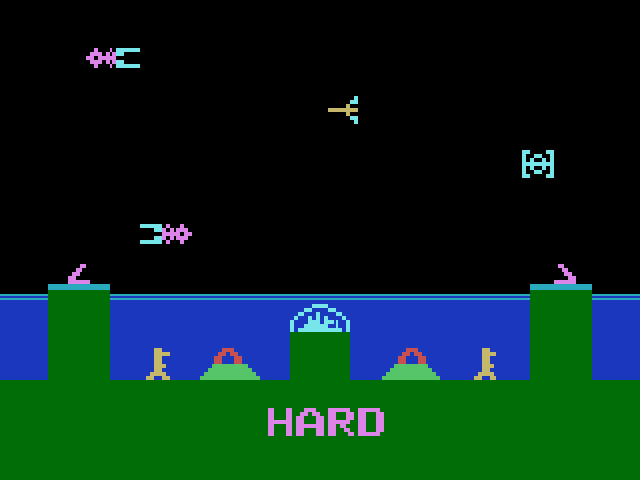
Imagic was one of the premier developers of the early 1980s and Atlantis was one of their most notable titles. Taking cues from Space Invaders and Missile Command, the game puts players in charge of protecting the underwater city of Atlantis from invading forces. Ships makes several passes back and forth across the screen before they are in firing range, but the assault is relentless and it can be difficult to stay on top of things. Space Invaders placed players in a moving tank, but the primary means of attack in Atlantis are two stationary cannons that look suspiciously like giant pink dildos. You can fall back on a screen-clearing bomb if things become too heated, but impeccable timing is necessary if you want to succeed. The Odyssey² version of Atlantis isn’t as pretty as the Atari 2600 original or the Intellivision port, but it’s still a blast to play. Protecting lost cities from alien invasions never gets old.
7
Frogger
1982
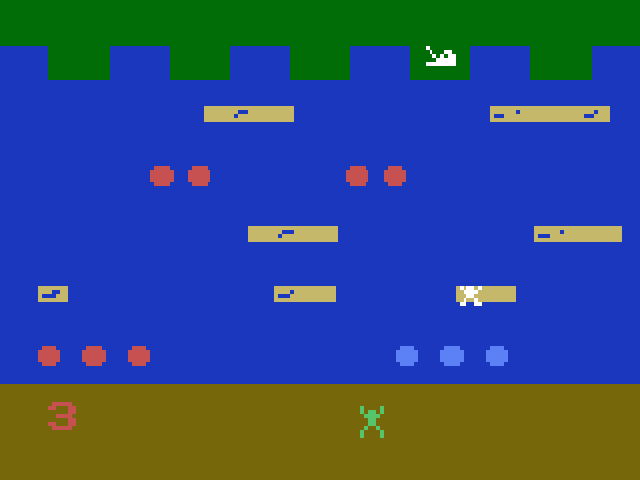
Frogger was released on numerous consoles in the early ’80s, so it’s not exactly an inspired choice for this list. Admittedly, the Odyssey² port looks more primitive than most other versions I’ve played, but the core gameplay holds up and it feels just like the arcade original. (My first Frogger experience was on a tabletop LCD game, so I’m not about to complain about the graphics on the Odyssey² version.) The premise is to guide a group of frogs to safety, and the entire game is controlled by a simple four-direction joystick. Unlike most versions, the Odyssey² port splits the action up into two parts. The first section challenges players to cross a busy street without being run over. In the second section, players have to get across a perilous river by hopping onto turtles, crocodiles, and floating logs. It’s a simple concept, but anyone who has ever worked for a living can likely relate to Frogger. Some days, all you really want is to go home.
6
Smithereens!
1982
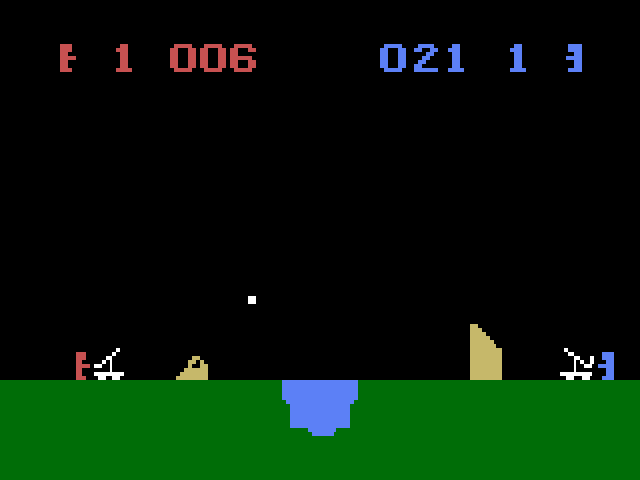
The goal in Smithereens! is to destroy your opponent’s tower before they destroy yours. To that end, players use catapults to lob rocks at their rivals. The distance the rocks will travel is ultimately determined by how long the joystick is held, so the game feels a little more sophisticated than typical button mashers of the era. You’ll obviously want to destroy your enemies tower as quickly as possible, so charging your shots properly requires a surprising amount of patience in the heat of battle. Although the objective is to destroy your enemy’s tower, you can potentially slow your opponent down by landing a direct hit on them. It’s a simple concept, but the game can get pretty frantic when it comes down to the wire. A lot of technique and precision is required to succeed, and it becomes harder and harder to hit the towers as they decrease in size. The battles are exciting from beginning to end, and there’s always the potential for a comeback victory.
5
Turtles
1983
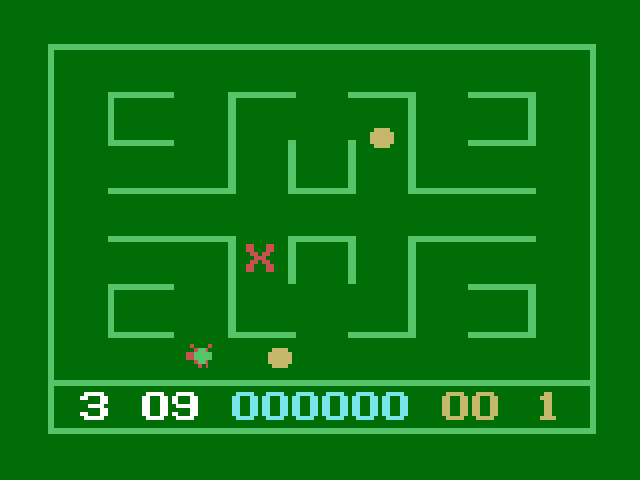
The success of Pac-Man in the early ’80s opened the floodgates to torrents of thinly-veiled knock offs, and Turtles kind of got lost in the mix. The original arcade game was developed by Konami (and later published by Sega as Turpin), but it was ported to only a handful of consoles. The point of the game is to guide a turtle around a maze while avoiding killer circles that are apparently supposed to represent beetles. I’m not entirely sure why the beetles are so big, but you can slow them down by dropping bombs behind you. (Come to think of it, I’m not entirely sure how the turtle is able to drop bombs either.) Most games in the genre gave players the simple task of eating dots, but Turtles challenges them to find baby turtles on the map and return them to their homes. The animated intro and short intermissions between levels highlight the effort that was put into the game, but Turtles is seldom talked about. It moves along at a slower pace than typical maze games from the era, but what else would you expect from a game about turtles?
4
K.C. Munchkin!
1981
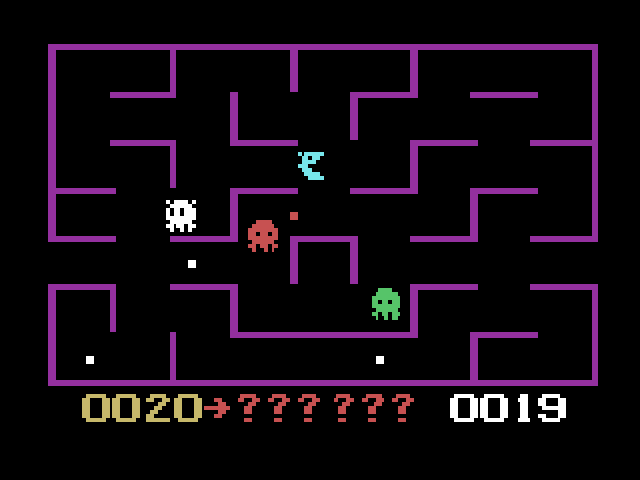
K.C. Munchkin! was at the center of a legal battle in the early ’80s. Atari had secured exclusive rights to bring Pac-Man to home consoles, but K.C. Munchkin! beat it to the market by an entire year. Atari eventually convinced an appellate court to halt sales of K.C. Munchkin! due to its similarities to Pac-Man, but a number of key differences could be seen in the Odyssey²’s flagship game. Unlike Namco’s arcade smash, the dots in in K.C. Munchkin! move around the maze. Catching up to the dots and avoiding the enemies at the same time requires a lot of forward thinking. Some mazes become invisible after you start moving, and the game also has a mode that randomly generates mazes for the player. There’s even a mode that lets players design their own mazes! Comparisons to Pac-Man are unavoidable and not entirely unfair, but K.C. Munchkin! can stand on its own merits.
3
Pick Axe Pete!
1982
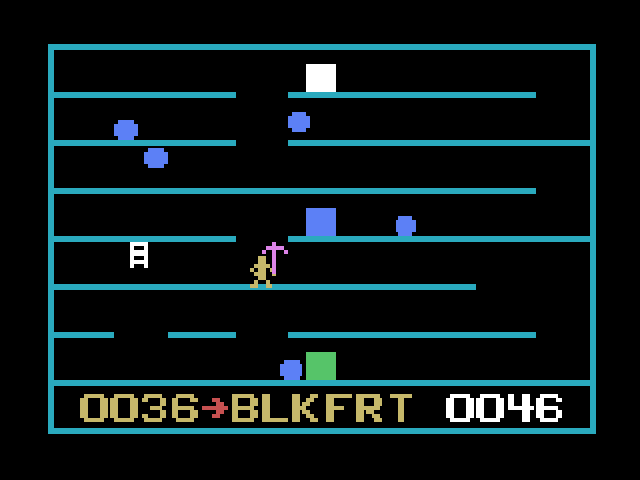
Video games often depicted miners in heroic roles in the early ’80s. Unfortunately, poor Pick Axe Pete didn’t get the same level of attention as Miner Willy (Jet Set Willy) or Bounty Bob (Miner 2049er). The game looks like Donkey Kong on the surface, but Pete’s adventure is radically different than Mario’s. Mario uses a hammer and has to jump over barrels, but Pete uses a pick axe and has to jump over boulders! It’s completely different! In all seriousness, the similarities between Pick Axe Pete! and Donkey Kong end there. Pete is quicker and more agile than Mario was in his first outing, and he can actually jump while holding a weapon. The game is light on storyline elements, and the entire point of the game is to smash boulders, find keys, and rack up as much points as possible. The Odyssey² was light on platformers, but Pick Axe Pete! is a stellar game with responsive controls that can’t be found on any other system.
2
K.C.’s Crazy Chase!
1982
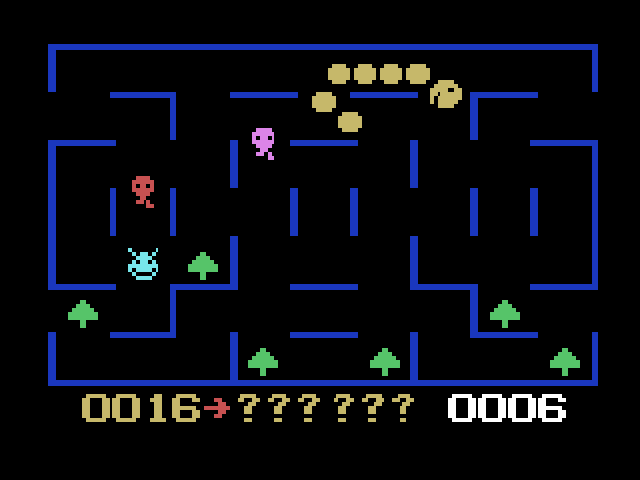
After K.C. Munchkin! was forced off of store shelves, Magnavox went back to the drawing board for the sequel. The end result combined elements of Pac-Man with Atari’s Centipede. Rather than navigating through a maze and eating dots, players pursue a “dratapillar” in an effort to consume it. Each section of the dratapillar functions like an energizer from Pac-Man and gives players the chance to neutralize their enemies. The dratapillar becomes more and more dangerous as it becomes smaller and smaller, since it becomes necessary to get closer to its deadly mouth. There are five different mazes to play through, and – like its predecessor – K.C.’s Crazy Chase! also gives players the ability to build their own mazes. K.C. Munchkin! was a hard act to follow, but the sequel was more creative and even more fun. K.C. may not be the most well-known video game mascot out there, but he did the Odyssey² proud.
1
Killer Bees!
1983
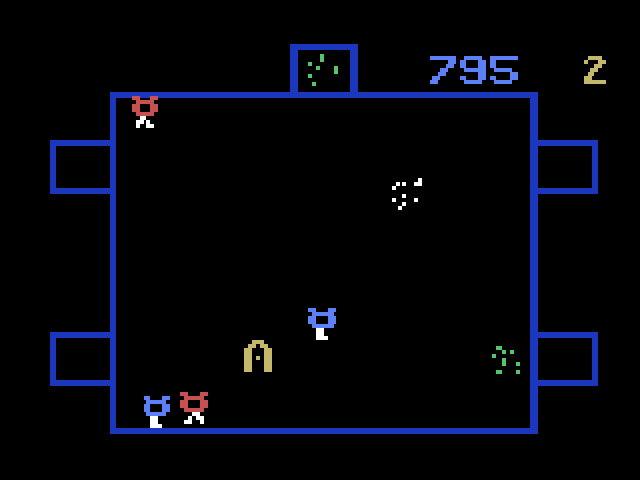
Killer Bees! is a unique title and one of the best games that you’ve (probably) never heard of. The game was released exclusively for the Odyssey² and hit shelves just in time for the entire market to crash, so it didn’t generate the buzz that it deserved. The game puts players in control of a swarm of bees (beads?) and tasks them with destroying killer robots that wander around the screen. The robots become increasingly faster as time goes on, so players are encouraged to eliminate them in a timely manner. Things are complicated by swarms of killer bees that attack in various phases. If the killer bees get too close, your own swarm will thin out and it will be more difficult to sting the aforementioned robots. The killer bees are surprisingly intelligent and will even begin to act as bodyguards for the robots after a while. If players manage to kill enough robots, however, they can charge up a laser and zap the hostile bees out of existence. Yet another game that can only be played on the Odyssey², Killer Bees! is deserving of the exclamation point in its title.


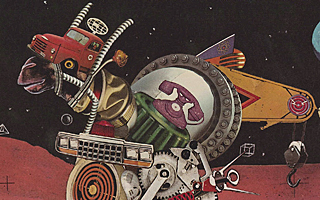
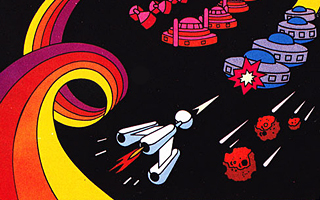

Do you agree with this list? Let us know what you think by leaving a comment below. Your opinion matters!